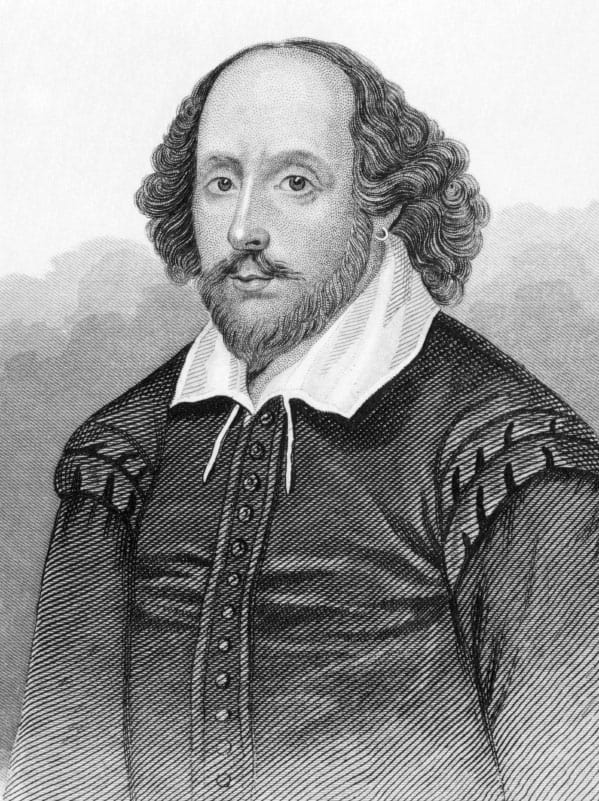Books about Shakespearian science and how to rebuild a scientific civilization after an apocalypse, plus a new take on “Powers of Ten”, reviewed by Tushna Commissariat and Margaret Harris

Star-crossed science
The poet, playwright and actor William Shakespeare was a vigilant and keen observer of human nature, writing about love, war, politics and family dramas with nearly unparalleled insight. But at first glance, it seems that he was comparatively uninterested in science. Indeed, most accounts of the famed Bard suggest that he was uninspired by, or even ignorant of, the science that was flourishing at the peak of his career. In his book The Science of Shakespeare: a New Look at the Playwright’s Universe, author Dan Falk takes the opposite view, suggesting that Shakespeare may have been much more influenced by the discoveries taking place than other scholars have acknowledged. Certainly, the playwright lived in scientifically interesting times. Born in the same year as Galileo, 1564, he came of age in a world that was starting to pay attention to Copernicus’s paradigm-shifting book On the Revolutions of the Heavenly Spheres, which was printed in 1543. Amazingly, within his lifetime, he could have seen two supernovae with his naked eye; there have been no similarly bright ones since. But as Falk points out early in the book, although Shakespeare was a prolific writer, not much has survived in the form of personal diaries, letters or accounts to help us pin down what he believed in or found interesting – leaving us to infer his personal views from his fictional works as best we can. With that in mind, Falk examines the seemingly “scientific” references in Shakespeare’s writings, looking for clues in, for example, Helena’s speech on the retrograde motion of Mars in All’s Well That Ends Well and Anthony’s declaration that he would need a new heaven and a new Earth to measure his endless love for Cleopatra. Shakespeare fans will find such examples entertaining, and Falk’s book gives readers a clearer idea of what was considered as scientific “fact” in Shakespeare’s day, when the idea of such things was new and game-changing. Falk’s book suggests that Shakespeare’s works and the beginnings of science as we know it are irrefutably, if not distinctly, intertwined. If historical rhetoric does not appeal to you, you may find parts of the book tedious, but it should resonate with readers who have an interest in the history of science.
- 2014 Thomas Dunne Books £16.65hb 364pp
The way the world ends
Of the many ways in which our current civilization could end, a super-pandemic might be the best we can hope for. Unlike a nuclear war, an asteroid strike or catastrophic climate change – all of which would devastate the environment as well as the human population – a virulent pandemic would leave the world’s resources and even much of our civilization’s infrastructure more or less intact. The small number of survivors would thus find themselves in a sort of post-apocalyptic Eden, with plenty of material around to help them build a new civilization out of the ruins of the old. But would they know how to do it? Lewis Dartnell doubts it, and to remedy this, the University of Leicester astrobiologist has written what amounts to a guidebook for the reconstruction. The Knowledge: How to Rebuild Our World From Scratch is essentially a collection of interesting bits of information about agriculture, chemistry, materials physics, medicine and engineering, cleverly packaged into a survival manual. It’s an effective gimmick: primed with thoughts of post-pandemic rebuilding, one pays rather more attention to explanations of, for example, wood pyrolysis and water purification than might otherwise be the case. The structure of The Knowledge does eventually get rather repetitive (“x is useful for y; you can make it by doing z”), so it is more a book for dipping into than reading straight through. But at its best, The Knowledge will give you a new appreciation for the building blocks of modern civilization – coupled with a better understanding of just how fragile they are.
- 2014 Bodley Head/Penguin Press £20/$27.95hb 352pp
Powers of time
In their 1968 short film Powers of Ten, Ray and Charles Eames took viewers on a journey through space, travelling to the farthest reaches of the universe and focusing in on the tiniest of particles within the human body. The film, which was based on a book by the Dutch educator and pacifist Kees Boeke, is justly famous for its artistic vision and for the way that it illustrates the sheer scale of inner and outer space. But what if the Eameses had tried to illustrate the scale of time, rather than space? In their book Time in Powers of Ten, authors Gerard ’t Hooft and Stefan Vandoren set out to do just that. After discussing processes that happen on familiar timescales such as seconds, minutes and years, they progress through ever-longer chunks of time, in ever-increasing powers of 10, until they reach 1090 s – far longer than the universe has existed or is expected to exist in the future. At this point they loop back around to the smallest timescales, beginning with the Planck time of 5.44 × 10–44 s and moving up through the half-lives of fundamental particles (about 10–25 s) into the physically rich timescales of the femto-, pico- and nanosecond. This book lacks the design finesse of the Eameses, but the text is detailed and scientifically strong (as you would expect; ’t Hooft shared the 1999 Nobel Prize for Physics) and the English translation by ’t Hooft’s daughter, Saskia Eisberg-’t Hooft, is clear and natural.
- 2014 World Scientific £16/$24pb 250pp



